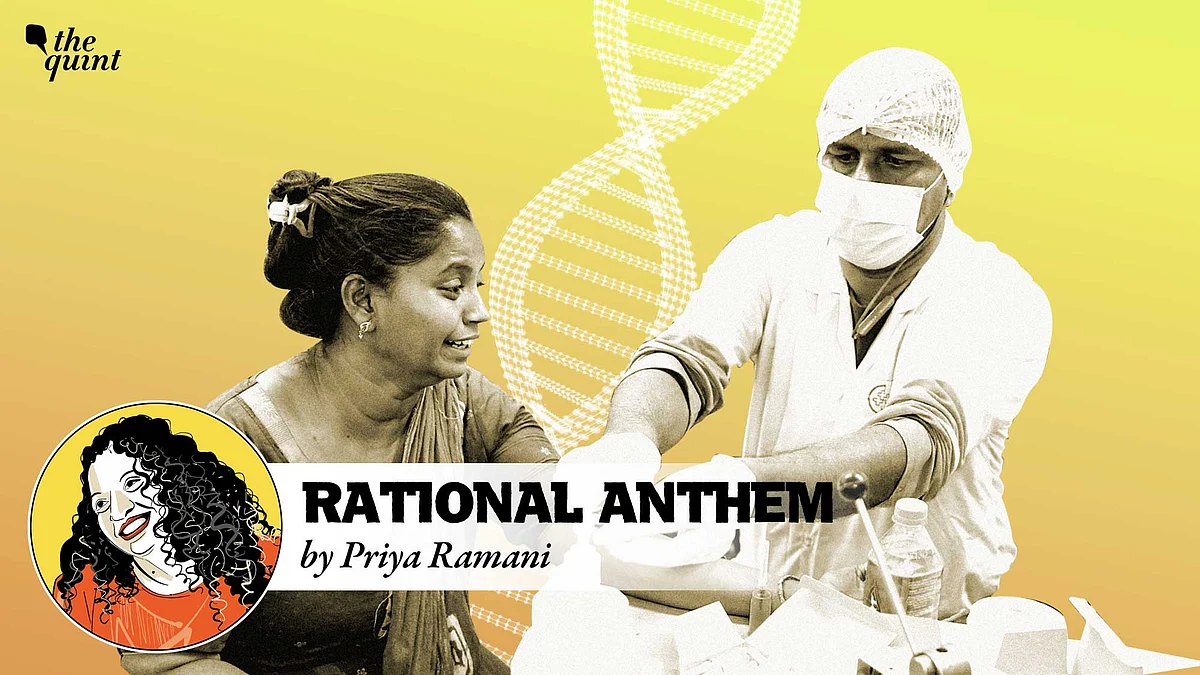
‘Nothing Survives Fire Except Teeth’: Dentist on DNA Tests of Air India Victims
Dr Parmar shares how teeth were used to identify the bodies of Air India crash victims.

advertisement
(Trigger Warning: This piece contains distressing content. Reader discretion is advised.)
“Prosthesis doesn’t melt, bone doesn’t melt, teeth don't melt. Even when nothing is left and the soft tissue is burned, these survive,” Dr Tamanna Parmar, 33, tells me over the phone from Ahmedabad.
That’s how Parmar, a periodontist and plastic implant surgeon, found herself extracting DNA samples from over 100 charred bodies alongside 25 or so doctors on 12 June. It was 6 pm. She was in her clinic as usual in Vejalpur, Ahmedabad, and she had just fitted a crown and repaired a cavity for a client.
Arriving at a Scene of Horror
Parmar called Dr Jayasankar Pillai, a forensic odontologist and her head of department at the Civil Hospital, where she had completed her residency the previous year. “Come soon,” he said. “We need help.”
The campus of the public hospital houses the Gujarat Medical Council, Gujarat State Pharmacy Council, and Gujarat Nursing Council, and it is attached to the BJ Medical College. The plane had crashed into the hostel mess at this medical college adding more casualties among students and staff.
Parmar and two other former residents, Dr Real Bharambhatt and Dr Ritika Patel (all now in private practice), travelled together for an hour and a half to reach the college. They went straight to the four-room postmortem centre where they began taking samples.
Teeth as the Final Identifier
Parmar says she will never forget the passenger from whose clavicle bone she extracted a sample. “Her blood was still warm. I can’t describe how disturbing it was,” she said, breaking down on the call.
There were many children, and the doctors calculated their age by the number of milk teeth present in their mouths.
“One child was a four-year-old. We could tell that because till E2, all the deciduous molars had erupted,” Parmar said, lapsing into dental jargon to describe the first set of molars that develop fully in children by this age.
Ash, Ornaments, and the Waiting Families
The doctors used scalpels and forceps to make cuts in the jaw so they could retract the mouth and access the teeth. Then, they extracted a molar from each victim. Molar teeth are considered a reliable source of DNA analysis.
When the postmortem centre got filled to capacity, the vaccination centre was repurposed for the bodies that came in later. “These were easier to identify, they had ornaments, you could even see the colour of their clothes,” she said. As she cut jewellery off bodies in rigor mortis, Parmar wondered about the fleeting nature of life.
Some details stood out. Like the jewellery a Caucasian six-footer was wearing.
There were forms, tags, and specimen boxes for bones and ornaments for each body.
Some relatives were waiting outside but Parmar said she only spoke to one man as she entered. He was crying and he showed her a photograph of his mother. “Tell me if you find her,” he said. Parmar replied that she would try. “But no one was recognisable by photo there,” she told me.
Philosophy Amid Fire
When the doctors conducting the postmortem exited the room, they averted their eyes from the relatives.
Parmar tried to get some of the medical students working alongside her to leave, so they would be spared these haunting sights. But some of them told her they had just left the mess after eating lunch, minutes before the plane crashed into it. Others said if the plane had crashed two seconds later, it would have rammed into their hostel building that was located a little distance away. “They all wanted to help.”
She had many philosophical thoughts as she worked methodically to extract DNA samples.
Parmar thinks, “We should spend lots of time with our loved ones, we should buy gifts for them, and remember that nothing is permanent.”
She didn’t sleep for more than 48 hours after the ordeal. “The first thing that registered when I entered the postmortem room was the smell of ash. It’s still not going from my brain,” she says. “Even when I finally slept, the smell of ash came from somewhere.”
When she left the postmortem centre for home at 4:30 am the next day, she bathed, washed her clothes, and began watching the news. “I began mentally comparing the victims photos on the news with the remains that I had just seen.”
Now, she can’t stop listening to a Kabir song on loop:
Kya leke aaya jagat mein, kya leke aaya jagat mein
Kya leke jayega, kya leke jayega
Do din ki zindagi hai, do din ka mela.
(The author is the founder of India Love Project and on the editorial board of Article 14.)
- Access to all paywalled content on site
- Ad-free experience across The Quint
- Early previews of our Special Projects
Published: undefined